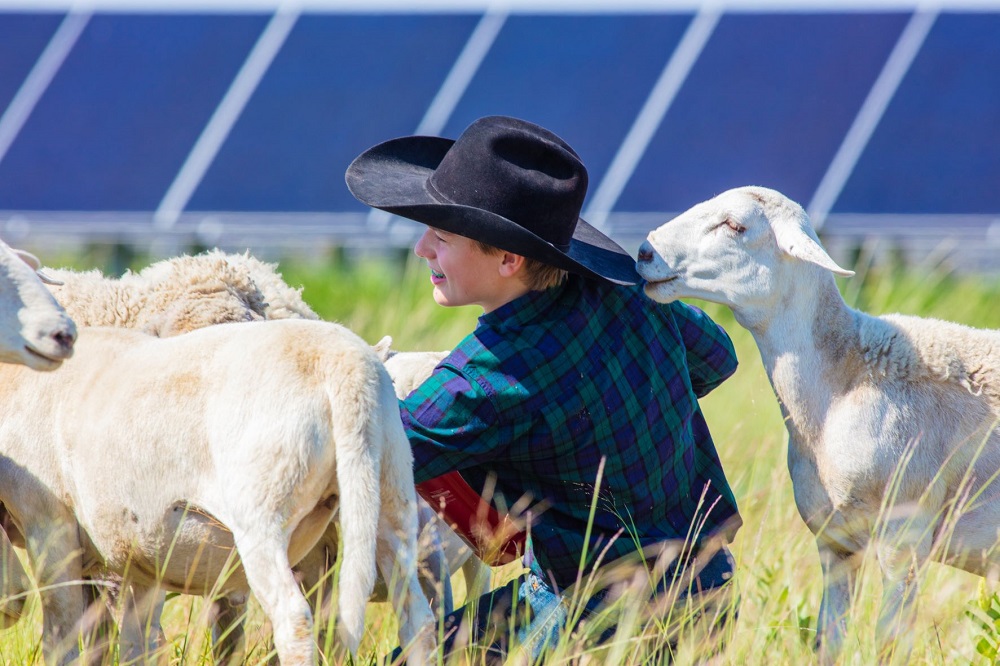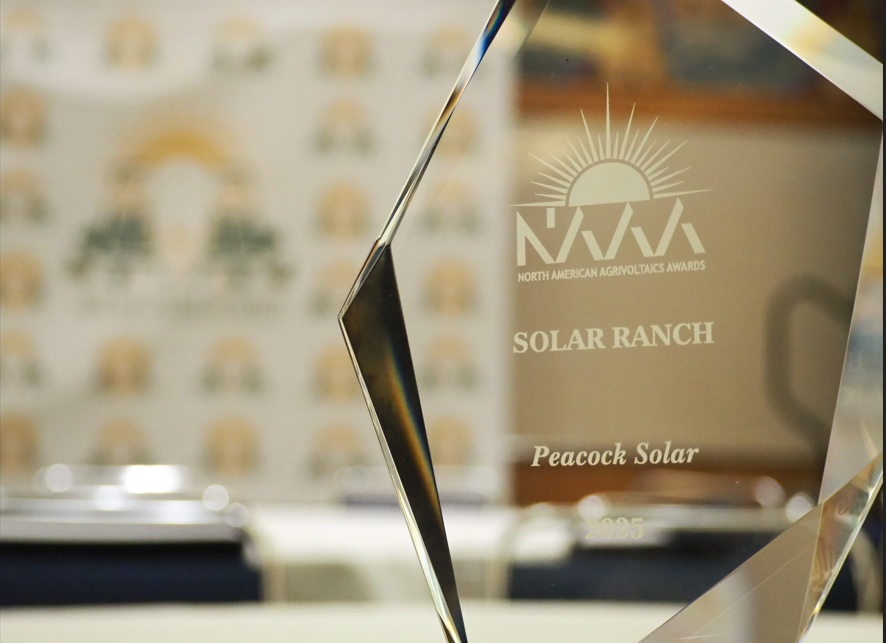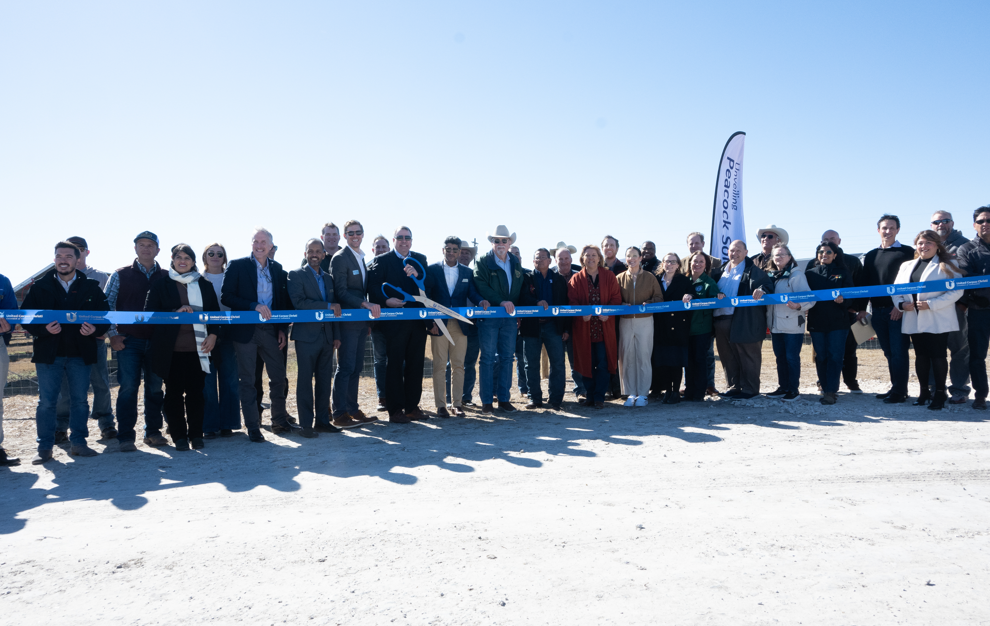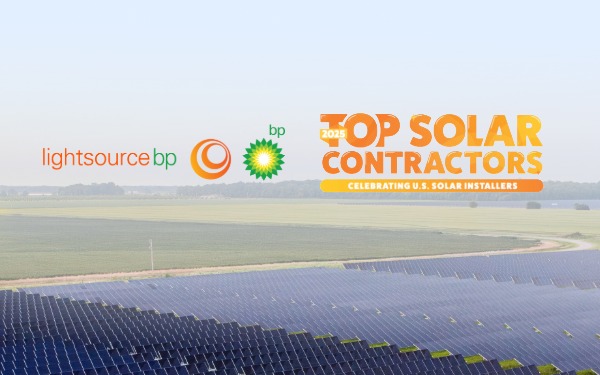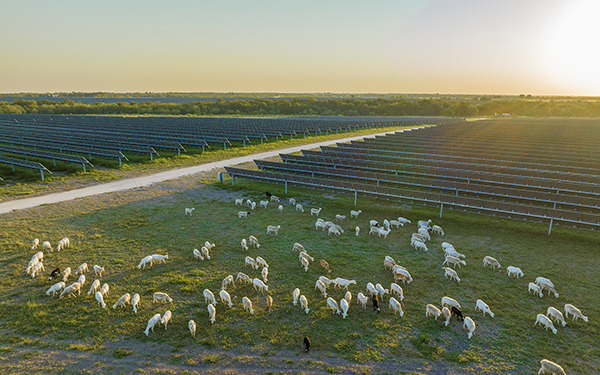Peacock Solar | 187MW in Texas
About the Peacock solar project
The 187 megawatt Peacock Solar farm located in San Patricio County, TX, entered operations in early 2025. Peacock Solar provides power directly to Gulf Coast Growth Venture’s (GCGV) nearby manufacturing complex.
The Peacock Solar project, developed, built and operated by Lightsource bp, supports the global transition to lower carbon energy while benefiting local communities and the economy. The solar farm created over 300 on-site jobs during construction and is expected to generate more than $25 million in tax revenue over 25 years.
Peacock is expected to generate more than 360,000 megawatt-hours of electricity annually to partially power GCGV, which produces materials used to manufacture clothes, food containers, packaging, agricultural film and construction materials.
Lightsource bp undertakes activities to support agriculture and biodiversity at Peacock, including:
- Planting vegetation under and around the solar panels, including native plant species beneficial to pollinators and other wildlife.
- Grazing sheep at the site to benefit the local rural economy and keep the farmland in production.
Peacock was named the 2025 Solar Ranch of the Year at the North American Agrivoltaics Awards.
The project also supports U.S. manufacturers, with ultra-low carbon solar panels sourced from Arizona-based First Solar and intelligent trackers from Connecticut-based GameChange Solar.
187MWdc
/150MWac of home-grown renewable energy
300
jobs created during construction, supporting local workers and domestic supply chains
$25 million
in property taxes, benefiting local schools & public services
33,800
equivalent homes powered with renewable energy
Site selection & preliminary Design
Stakeholder outreach
Permitting & environmental studies
Land management & biodiversity planning
Final engineering, financing & construction
Operation & maintenance
Decommissioning & recycling
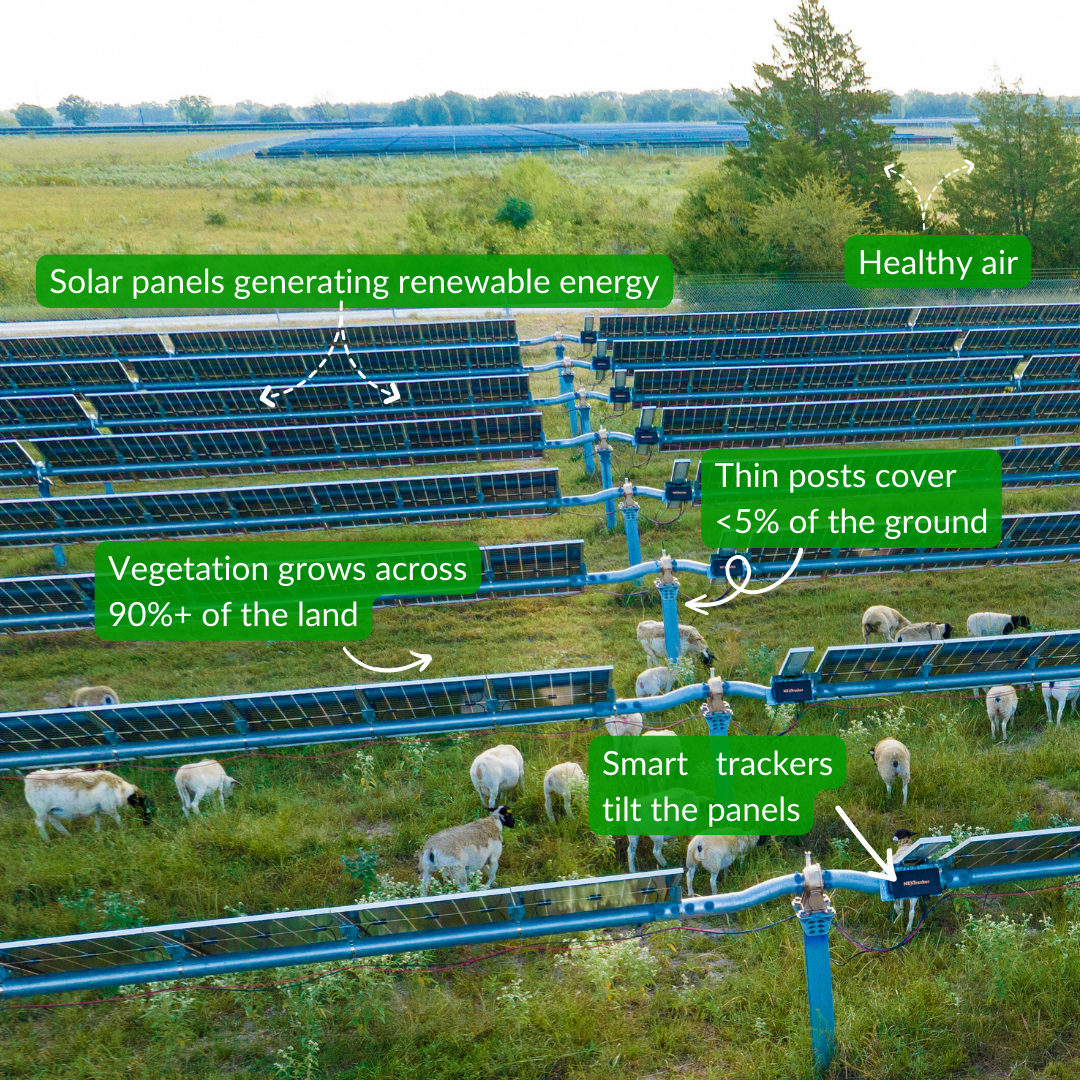
How solar farms work
Solar farms add energy to the local electric grid, just like other electric power plants. Rows of solar panels produce the electricity, which flows through the grid to power places like homes, businesses, schools and hospitals.
Solar panels are mounted on structures called racking. Racking sits on posts that raise the panels above the ground. The posts take up less than 5% of the land. With significant open space under the panels, in the rows and in buffer areas to plant site-specific grasses and other vegetation, we set a goal of increasing biodiversity in the first 5 years of operation. We also integrate agriculture where practical.
The racking is equipped with smart solar trackers that slowly and quietly rotate throughout the day, following the sun to maximize solar energy production. These smart trackers serve other important purposes, too: they help protect solar panels from hailstorms, high winds and buildup of snow on solar panels.
Community dialogue – we want to be a good neighbor
Lightsource bp is dedicated to supporting communities that are home to our solar projects across America. That’s why we have an entire Community Relations team that works closely with our neighbors to maximize the positive social impacts of our projects.
To connect with a Community Relations Manager please email USCommunityRelations@lightsourcebp.com.

Making a local impact
A solar farm is so much more than energy production. It can boost biodiversity on the land. It can provide new tax revenue to your community. It’s a new, year-round type of harvest for your neighbor farmers that helps them keep their land for future generations.
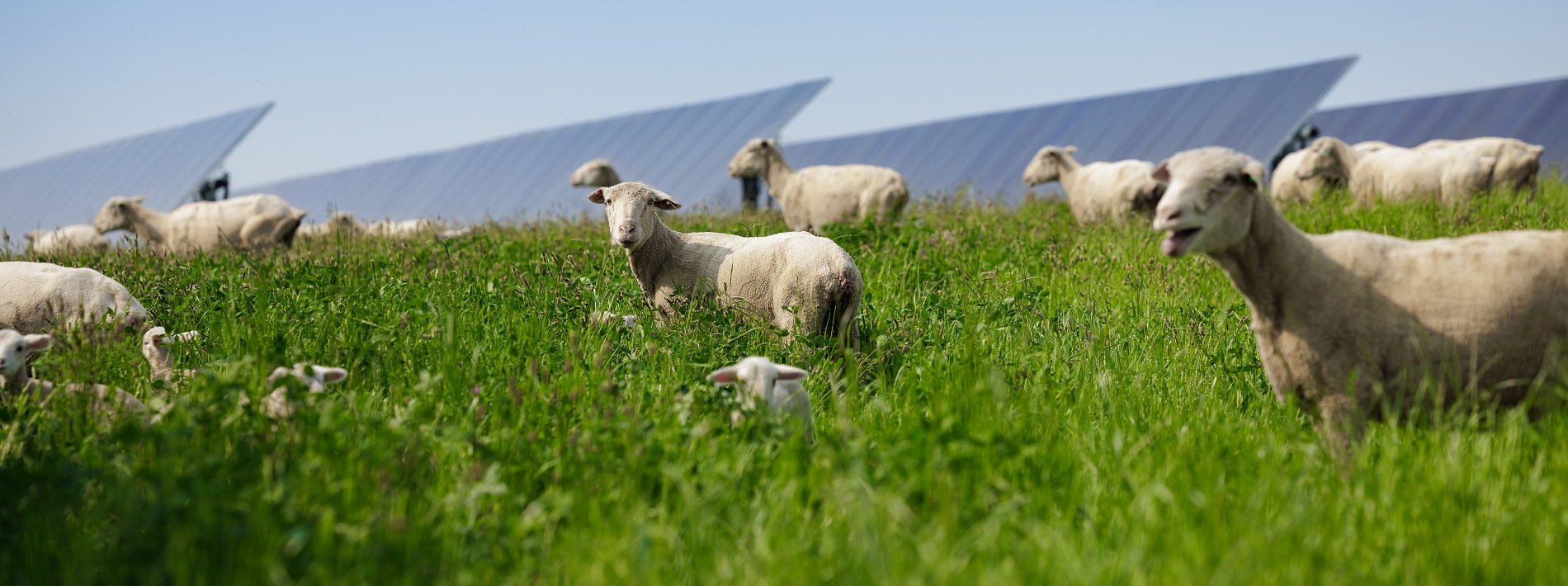
Long-term benefits
In addition to generating renewable energy for Texas’ electrical grid, development of the land with home-grown solar energy has several additional long-term benefits, including:
- Rest and regeneration of the land during the project’s life, improving soil health and preserving it for future use.
- Healthy groundcover under and around the panels that boosts local biodiversity, creating a stable, long-term home for plants, pollinators, birds and other wildlife.
- Opportunity for integrated agriculture such as sheep grazing or bee keeping.
- Rural resilience through continued local ownership of the land.
- Energy security and independence from foreign sources of fuel.
Economic growth for the community
The Peacock Solar project represents a significant private capital investment in renewable energy for Texas. Economic benefits include:
- Throughout its life, the project will generate $25+ million in new tax revenue, benefiting local school systems and many other community public services – without an increase in taxes to local residents.
- 300 jobs created during peak construction of the project.
- Lightsource bp is committed to supporting philanthropic activities and charitable donations to local organizations.
Our Responsible Solar approach
Lightsource bp has a deep commitment to delivering safe, renewable and affordable energy, as well as maximizing the environmental sustainability and positive social impacts of each of our projects. We call this approach Responsible Solar. We pay attention to every detail, from the fencing we choose to the vegetation we plant. We want our Peacock Solar farm to be a great project for the local community. In developing the project, we are implementing our best practices for solar farm development, including the below:
Environment and aesthetics
- Planting new trees and other vegetation between the solar panels and public view where needed for screening and to provide habitat for local wildlife.
- Designing setbacks from nearby property lines and public roads.
- Planting vegetation under and around the solar panels, with a seed mix customized for the local area in order to increase biodiversity and improve soil health.
Upkeep and decommissioning
- Making sure appropriate drainage and traffic mitigation are provided during construction.
- Budgeting for consistent maintenance and upkeep of the facility.
- Committing to recycling.
- Preparing a decommissioning plan to ensure that the project will be removed at the end of its life.
Video: Meet Texas families raising sheep on solar farms
Solar grazing brings new hope to America's farmers
Information and resources
We’ve put together a collection of resources for anyone who’d like to know more about utility-scale solar energy.
Solar farm FAQs
We’ve put together a list of the most commonly asked questions, and their answers.
Solar energy basics
National Renewable Energy Lab (NREL)
Lightsource bp educational materials
Solar panel safety and recycling
Complaint Filing Procedure
Complaints can be submitted through the following means:
- US Community Relations email address: uscommunityrelations@lightsourcebp.com
- Lightsource bp office phone number: 1 (415) 523-0200
- US Mail: Peacock Solar, 400 Montgomery Street, 8th Floor San Francisco, CA 94104
Individuals filing a complaint should include their name, contact information, date of complaint, description of complaint (including location, date, and time of incident, as applicable) and any other relevant details to aid in resolution.
Complaint Review Process
Our designated staff will contact the complainant within five (5) business days of receiving a complaint. During this call or email, we will confirm the issue, identify the relevant site, and establish the best way to stay in touch. We will also provide a specific timeframe for follow-up.
All complaints are logged in our stakeholder management platform to track progress and resolution time. A subject matter expert (SME) will work on finding a resolution and provide updates as needed.
We are committed to resolving complaints as quickly as possible and will provide regular updates. In some cases, unexpected delays may occur, or a complaint may be deemed unresolvable. If this happens, we will inform the complainant and explain the situation.



